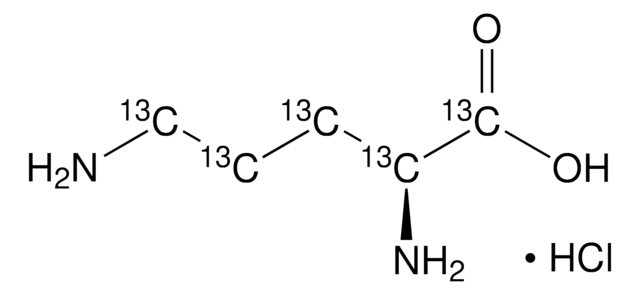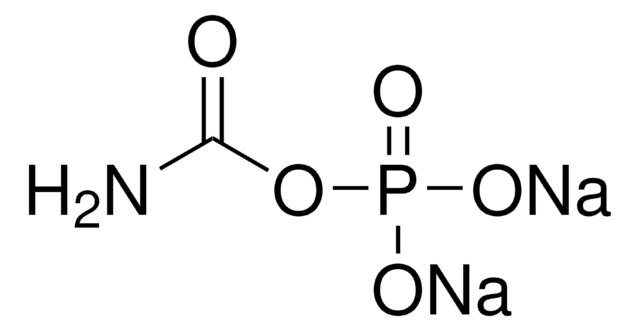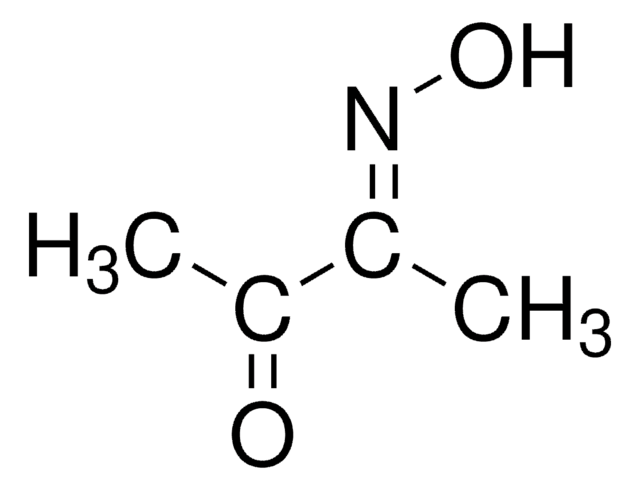75440
L-Ornithine dihydrochloride
≥99.0% (AT)
Sinônimo(s):
(S)-2,5-Diaminopentanoic acid dihydrochloride
About This Item
Produtos recomendados
Nível de qualidade
Ensaio
≥99.0% (AT)
Formulário
crystals
atividade óptica
[α]20/D +17±1°, c = 5% in H2O
técnica(s)
ligand binding assay: suitable
resíduo de ignição
≤0.1% (as SO4)
cor
colorless
pf
197-199 °C (dec.)
traços de ânion
sulfate (SO42-): ≤100 mg/kg
traços de cátion
As: ≤0.1 mg/kg
Cd: ≤5 mg/kg
Co: ≤5 mg/kg
Cu: ≤5 mg/kg
Fe: ≤5 mg/kg
NH4+: ≤100 mg/kg
Ni: ≤5 mg/kg
Pb: ≤5 mg/kg
Zn: ≤5 mg/kg
cadeia de caracteres SMILES
Cl.Cl.NCCC[C@H](N)C(O)=O
InChI
1S/C5H12N2O2.2ClH/c6-3-1-2-4(7)5(8)9;;/h4H,1-3,6-7H2,(H,8,9);2*1H/t4-;;/m0../s1
chave InChI
HGBAVEGDXFHRQP-FHNDMYTFSA-N
Ações bioquímicas/fisiológicas
Código de classe de armazenamento
11 - Combustible Solids
Classe de risco de água (WGK)
WGK 3
Ponto de fulgor (°F)
Not applicable
Ponto de fulgor (°C)
Not applicable
Escolha uma das versões mais recentes:
Certificados de análise (COA)
Não está vendo a versão correta?
Se precisar de uma versão específica, você pode procurar um certificado específico pelo número do lote ou da remessa.
Já possui este produto?
Encontre a documentação dos produtos que você adquiriu recentemente na biblioteca de documentos.
Os clientes também visualizaram
Nossa equipe de cientistas tem experiência em todas as áreas de pesquisa, incluindo Life Sciences, ciência de materiais, síntese química, cromatografia, química analítica e muitas outras.
Entre em contato com a assistência técnica









